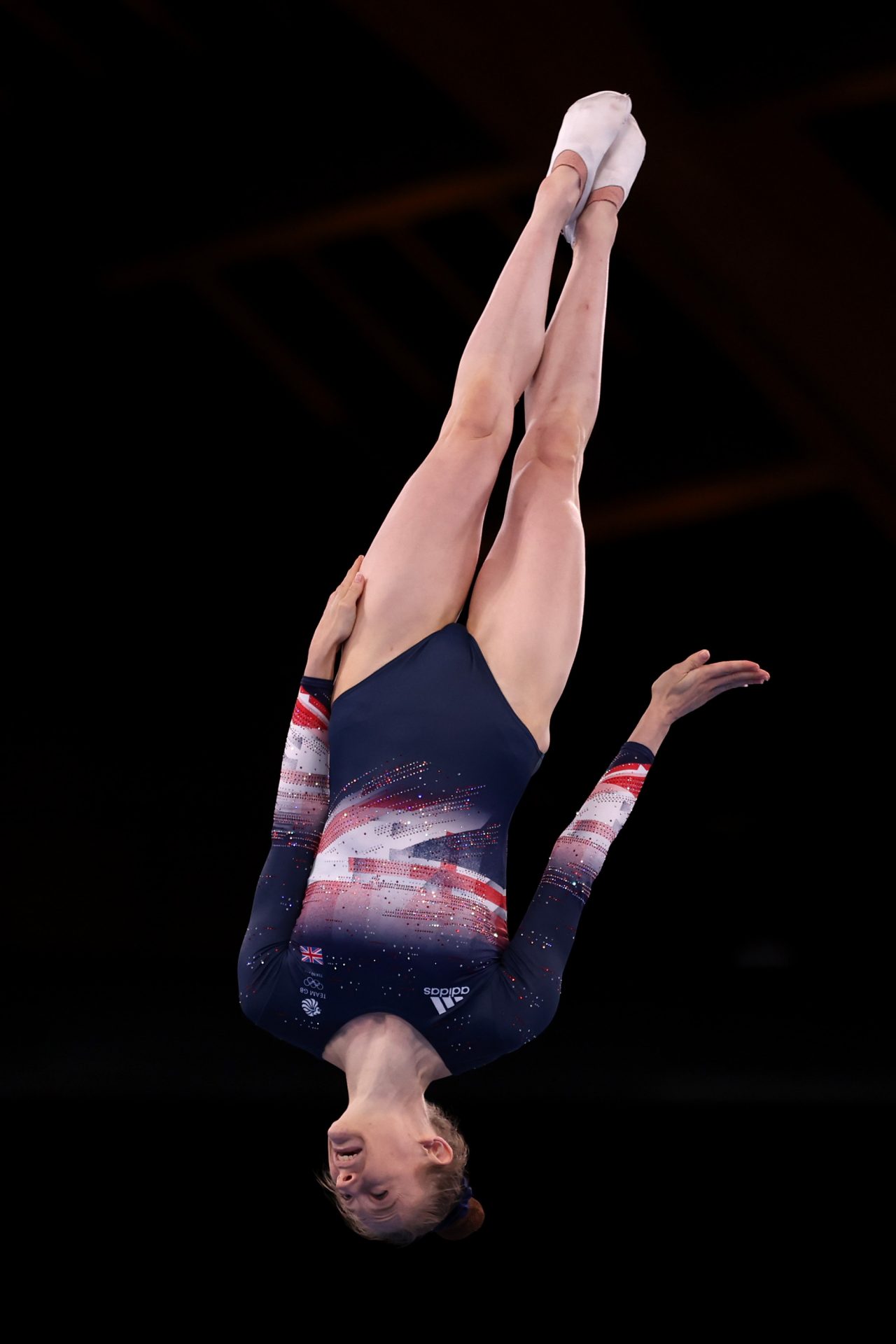Trampolining isn’t just for children and Olympians. Here’s how almost everyone can reap the benefits of the sport, according to an expert trainer.
It goes without saying that the Olympics inspires it’s audience to get out and move. While the average viewer knows they won’t be keeping up with Dina Asher-Smith on the track or Bethany Shriever on the bike, the thrilling atmosphere of the games makes many people want to lace up.
There are some events, however, that are more accessible than others – and trampolining is one of them. If you ‘ooh’ and ‘ahhed’ at Team GB’s Bryony Page and her bronze-worthy performance, it might be time to consider joining your local trampolining team.
You may also like
Bethany Shriever: the most important part of the BMX gold medal win in Tokyo
Trampolining’s little sister rebounding may have become all the rage a few years ago, but now it’s time for the big springs to take centre stage. The sport is now the third most popular fitness trend on TikTok, with nearly 5 billion views, and the most Google searched Olympic sport in 2021.
Why is trampolining so good for you?
“Almost anyone can do trampolining, from all ages to all abilities,” says trampolining coach Jessica Hannen from Better leisure centers. With students of all ages, experience and disabilities, she explains that “everyone can gain something from trampolining, first and foremost because it’s really fun.”
Don’t think that means it’s not a tough workout though. “It’s a really good source of cardio fitness and it builds lower body muscle without weight bearing, as the bed of the trampoline absorbs impact,” she says. That makes it perfect for those who struggle with joint pain or injury that stops them doing high-impact sport such as running or HIIT.
A 2019 study published in Research Quarterly for Exercise and Sport even found that trampolining can be as effective as resistance training for improving knee muscle strength and dynamic balance. And you don’t have to train like an Olympian to reap the benefits: a 2015 study showed that half an hour of trampolining three times a week was shown to improve balance and dynamic gait while reducing the risk of falls in stroke patients.
“You can get a massive set of achievement and enthusiasm for the sport because it’s easy to progress quickly,” says Hannen. “Most people manage to move from learning the basic jumps to simple moves like seat drops in just a few sessions, then add on harder technique soon after.”

How to get started with trampolining
Before you buy a trampoline to get training from your back garden, Hannen recommends learning the basics with a proper coach. “Trampolines can be high off the floor and you can generate a lot of height and speed. You need to learn how to control and stop your bounce otherwise it can be pretty dangerous,” she says.
During your initial sessions, you’ll learn how to nail the basic moves in a protective environment. Not only is being surrounded by crash mats under the watchful eye of a qualified coach important for your physical safety, it can also help your confidence. After all, tuck jumping high into the air or trusting yourself to flip upside down can be pretty terrifying. “So much of trampolining is mind over matter,” says Hannen. “You’ve got to have the skill but also the courage, and most people really can get there with consistency.”
British Gymnastics have an easy discovery tool on their site to find your local trampolining centre. What’s stopping you from making like Page and signing up?
Images: Getty
Source: Read Full Article
